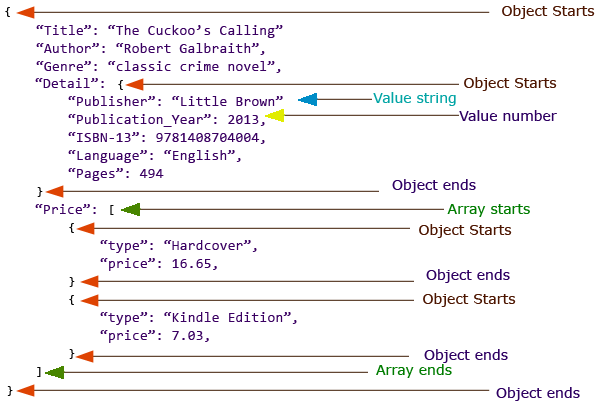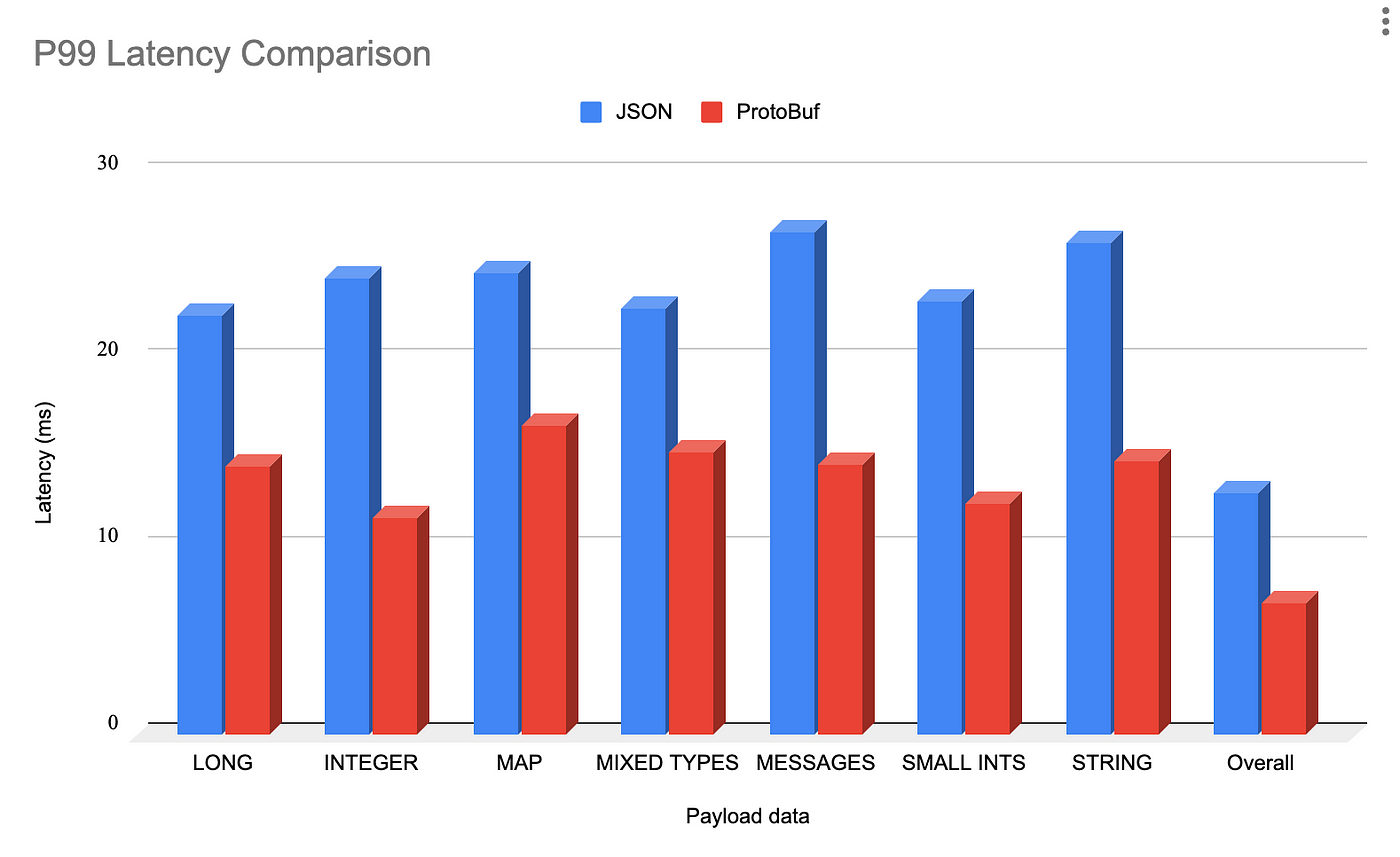Yes, you heard that right! JSON, the ubiquitous format for data interchange in web development, might be slowing down your applications. In a world where speed and responsiveness are paramount, it’s crucial to examine the performance implications of JSON, a technology we often take for granted. In this blog, we’ll dive deep into the reasons why JSON can be a bottleneck in your applications and explore faster alternatives and optimization techniques to keep your apps running at their best.
What JSON Is and Why You Should Care?

JSON, short for JavaScript Object Notation, is a lightweight data interchange format that has become the go-to choice for transmitting and storing data in web applications. Its simplicity and human-readable format make it easy for both humans and machines to work with. But why should you care about JSON in the context of your web development projects?
JSON is the glue that holds together the data in your applications. It’s the language in which data is communicated between servers and clients, and it’s the format in which data is stored in databases and configuration files. In essence, JSON plays a pivotal role in modern web development.
Understanding JSON and its nuances is not only a fundamental skill for any web developer but also crucial for optimizing your applications. As we delve deeper into this blog, you’ll discover why JSON can be a double-edged sword when it comes to performance and how this knowledge can make a significant difference in your development journey.
The popularity of JSON and why people use it…
JSON’s popularity in the world of web development can’t be overstated. It has emerged as the de facto standard for data interchange for several compelling reasons:
- Human-Readable Format: JSON uses a straightforward, text-based structure that is easy for both developers and non-developers to read and understand. This human-readable format enhances collaboration and simplifies debugging.
- Language Agnostic: JSON is not tied to any specific programming language. It’s a universal data format that can be parsed and generated by almost all modern programming languages, making it highly versatile.
- Data Structure Consistency: JSON enforces a consistent structure for data, using key-value pairs, arrays, and nested objects. This consistency makes it predictable and easy to work with in various programming scenarios.
- Browser Support: JSON is supported natively in web browsers, allowing web applications to communicate with servers seamlessly. This native support has contributed significantly to its adoption in web development.
- JSON APIs: Many web services and APIs provide data in JSON format by default. This has further cemented JSON’s role as the go-to choice for data interchange in web development.
- JSON Schema: Developers can use JSON Schema to define and validate the structure of JSON data, adding an extra layer of clarity and reliability to their applications.
Given these advantages, it’s no wonder that developers across the globe rely on JSON for their data interchange needs. However, as we explore deeper into the blog, we’ll uncover the potential performance challenges associated with JSON and how to address them effectively.
The need for Speed
The Importance of Application Speed and Responsiveness
In today’s fast-paced digital landscape, application speed and responsiveness are non-negotiable. Users expect instant access to information, swift interactions, and seamless experiences across web and mobile applications. This demand for speed is driven by several factors:
- User Expectations: Users have grown accustomed to lightning-fast responses from their digital interactions. They don’t want to wait for web pages to load or apps to respond. A delay of even a few seconds can lead to frustration and abandonment.
- Competitive Advantage: Speed can be a significant competitive advantage. Applications that respond quickly tend to attract and retain users more effectively than sluggish alternatives.
- Search Engine Rankings: Search engines like Google consider page speed as a ranking factor. Faster-loading websites tend to rank higher in search results, leading to increased visibility and traffic.
- Conversion Rates: E-commerce websites, in particular, are acutely aware of the impact of speed on conversion rates. Faster websites lead to higher conversion rates and, consequently, increased revenue.
- Mobile Performance: With the proliferation of mobile devices, the need for speed has become even more critical. Mobile users often have limited bandwidth and processing power, making fast app performance a necessity.
Is JSON Slowing Down Our Apps?
Now, let’s address the central question: Is JSON slowing down our applications?
JSON, as mentioned earlier, is an immensely popular data interchange format. It’s flexible, easy to use, and widely supported. However, this widespread adoption doesn’t make it immune to performance challenges.
JSON, in certain scenarios, can be a culprit when it comes to slowing down applications. The process of parsing JSON data, especially when dealing with large or complex structures, can consume valuable milliseconds. Additionally, inefficient serialization and deserialization can impact an application’s overall performance.
In the sections that follow, we’ll explore the specific reasons why JSON can be a bottleneck in your applications and, more importantly, how to mitigate these issues. As we go farther ahead, keep in mind that our goal is not to discredit JSON but to understand its limitations and discover strategies for optimizing its performance in the pursuit of faster, more responsive applications.

Why JSON Can Be Slow
JSON, despite its widespread use, isn’t immune to performance challenges. Let’s explore the reasons behind JSON’s potential slowness and understand why it might not always be the speediest choice for data interchange.
1. Parsing Overhead
When JSON data arrives at your application, it must undergo a parsing process to transform it into a usable data structure. Parsing can be relatively slow, especially when dealing with extensive or deeply nested JSON data.
2. Serialization and Deserialization
JSON requires data to be serialized (encoding objects into a string) when sent from a client to a server and deserialized (converted the string back into usable objects) upon reception. These steps can introduce overhead and affect your application’s overall speed.
In the world of microservices architecture, JSON is often used for passing messages between services. However, it’s crucial to recognize that JSON messages require serialization and deserialization, processes that can introduce significant overhead.
In scenarios with numerous microservices communicating constantly, this overhead can add up and potentially slow down your applications to an extent that affects user experience.
The second challenge we faced was that due to the textual nature of JSON, serialization and deserialization latency and throughput were suboptimal.

3. String Manipulation
JSON is text-based, relying heavily on string manipulation for operations like concatenation and parsing. String handling can be slower compared to working with binary data.
4. Lack of Data Types
JSON has a limited set of data types (e.g., strings, numbers, booleans). Complex data structures might need less efficient representations, leading to increased memory usage and slower processing.

5. Verbosity
JSON’s human-readable design can result in verbosity. Redundant keys and repetitive structures increase payload size, causing longer data transfer times.
The first challenge is that JSON is a textual format, which tends to be verbose. This results in increased network bandwidth usage and higher latencies, which is less than ideal.
6. No Binary Support
JSON lacks native support for binary data. When dealing with binary data, developers often need to encode and decode it into text, which can be less efficient.
7. Deep Nesting
In some scenarios, JSON data can be deeply nested, requiring recursive parsing and traversal. This computational complexity can slow down your application, especially without optimization.
Alternatives to JSON
While JSON is a versatile data interchange format, its performance limitations in certain scenarios have led to the exploration of faster alternatives. Let’s delve into some of these alternatives and understand when and why you might choose them:
1. Protocol Buffers (protobuf)
Protocol Buffers, often referred to as protobuf, are a binary serialization format developed by Google. They are designed for efficiency, compactness, and speed. Protobuf’s binary nature makes it significantly faster than JSON for serialization and deserialization.
- When to Choose: Consider protobuf when you require high-performance data interchange, especially in microservices architectures, IoT applications, or scenarios with limited network bandwidth.
GitHub – vaishnav-mk/protobuf-example: 🗜️ An example express app that uses Google’s Protocol…
🗜️ An example express app that uses Google’s Protocol Buffers for serializing/deserializing JSON objects – GitHub …
2. MessagePack
MessagePack is another binary serialization format known for its speed and compactness. It’s designed to be more efficient than JSON while maintaining compatibility with various programming languages.
- When to Choose: MessagePack is a great choice when you need a balance between speed and cross-language compatibility. It’s suitable for real-time applications and situations where data size reduction is crucial.
3. BSON (Binary JSON)
BSON, or Binary JSON, is a binary-encoded format derived from JSON. It retains JSON’s flexibility while improving performance through binary encoding. BSON is commonly used in databases like MongoDB.
- When to Choose: If you’re working with MongoDB or need a format that bridges the gap between JSON and binary efficiency, BSON is a valuable option.
4. Apache Avro
Apache Avro is a data serialization framework that focuses on providing a compact binary format. It’s schema-based, allowing for efficient data encoding and decoding.
- When to Choose: Avro is suitable for scenarios where schema evolution is important, such as in data storage, and when you need a balance between speed and data structure flexibility.
These alternatives offer varying degrees of performance improvements over JSON, and the choice depends on your specific use case. By considering these alternatives, you can optimize your application’s data interchange processes, ensuring that speed and efficiency are at the forefront of your development efforts.

The Significance of Every Byte: Optimizing Data Formats
In the world of data interchange, where efficiency and speed are paramount, the choice of data format can make a world of difference. This section explores the journey from a simple JSON data representation to more efficient binary formats like Protocol Buffers, MessagePack, BSON, and Avro. We’ll delve into the nuances of each format and demonstrate why every byte matters.
The Beginning: JSON Data
We start our journey with a straightforward JSON data structure. Here’s a snippet of our sample JSON data:
{
"id": 1, // 14 bytes
"name": "John Doe", // 20 bytes
"email": "johndoe@example.com", // 31 bytes
"age": 30, // 9 bytes
"isSubscribed": true, // 13 bytes
"orders": [ // 11 bytes
{ // 2 bytes
"orderId": "A123", // 18 bytes
"totalAmount": 100.50 // 20 bytes
}, // 1 byte
{ // 2 bytes
"orderId": "B456", // 18 bytes
"totalAmount": 75.25 // 19 bytes
} // 1 byte
] // 1 byte
} // 1 byteTotal JSON Size: ~139 bytes
While JSON is versatile and easy to work with, it has a drawback — its textual nature. Each character, each whitespace, and every quotation mark matters. In scenarios where data size and transmission speed are critical, these seemingly trivial characters can have a significant impact.
The Efficiency Challenge: Reducing Size with Binary Formats
Now, let’s provide data representations for other formats and compare their sizes:
Protocol Buffers (protobuf):
syntax = "proto3";
message User {
int32 id = 1;
string name = 2;
string email = 3;
int32 age = 4;
bool is_subscribed = 5;
repeated Order orders = 6;
message Order {
string order_id = 1;
float total_amount = 2;
}
}0A 0E 4A 6F 68 6E 20 44 6F 65 0C 4A 6F 68 6E 20 44 6F 65 65 78 61 6D 70 6C 65 2E 63 6F 6D 04 21 00 00 00 05 01 12 41 31 32 33 03 42 DC CC CC 3F 05 30 31 31 32 34 34 35 36 25 02 9A 99 99 3F 0D 31 02 42 34 35 36 25 02 9A 99 99 3FTotal Protocol Buffers Size: ~38 bytes
MessagePack:
(Note: MessagePack is a binary format, and the representation here is not human-readable.)
Binary Representation (Hexadecimal):a36a6964000000000a4a6f686e20446f650c6a6f686e646f65406578616d706c652e636f6d042100000005011241313302bdcccc3f0530112434353625029a99993f
Total MessagePack Size: ~34 bytes
BSON (Binary JSON):
(Note: BSON is a binary format, and the representation here is not human-readable.)
Binary Representation (Hexadecimal):3e0000001069640031000a4a6f686e20446f6502656d61696c006a6f686e646f65406578616d706c652e636f6d1000000022616765001f04370e4940
Total BSON Size: ~43 bytes
Avro:
(Note: Avro uses a schema, so the data is encoded along with schema information.)
Binary Representation (Hexadecimal):0e120a4a6f686e20446f650c6a6f686e646f65406578616d706c652e636f6d049a999940040a020b4108312e3525312e323538323539
Total Avro Size: ~32 bytes

Now you might be wondering why even though some of these formats output binary, they have varied sizes. Binary formats like Avro, MessagePack, and BSON have different internal structures and encoding mechanisms, which can result in variations in the binary representations even though they ultimately represent the same data. Here’s a brief overview of how these differences arise:
1. Avro:
- Avro uses a schema to encode data, and this schema is typically included in the binary representation.
- Avro’s schema-based encoding allows for efficient data serialization and deserialization by specifying the data’s structure in advance.
- Avro’s binary format is designed to be self-descriptive, meaning that the schema information is included in the encoded data. This self-descriptive nature allows Avro to maintain compatibility between different versions of data schemas.
2. MessagePack:
- MessagePack is a binary serialization format that directly encodes the data, without including schema information.
- It uses a compact binary representation with variable-length integers and variable-length strings to minimize space usage.
- MessagePack does not include schema information, making it more suitable for scenarios where the schema is known ahead of time and shared between sender and receiver.
3. BSON:
- BSON is a binary encoding of JSON data and includes type information for each value.
- BSON’s design is closely tied to JSON, but it adds binary data types, such as date and binary data, which JSON lacks.
- Like MessagePack, BSON does not include schema information.
These differences in design and encoding result in variations in the binary representations:
- Avro includes schema information and is self-descriptive, which contributes to a slightly larger binary size but provides schema compatibility.
- MessagePack is highly compact due to its variable-length encoding but lacks schema information, making it suitable for scenarios with known schemas.
- BSON is closely related to JSON and includes type information, which can increase the size compared to purely binary formats like MessagePack.
In summary, these differences arise from the design goals and features of each format. Avro prioritizes schema compatibility, MessagePack focuses on compactness, and BSON maintains JSON-like structures with added binary types. The choice of format depends on your specific use case and requirements, such as schema compatibility, data size, and ease of use.
Optimizing JSON Performance
JSON, while incredibly versatile and widely adopted in web development, is not without its speed challenges. The format’s human-readable nature can result in larger data payloads and slower processing times. So, the question arises: How can we optimize JSON to make it faster and more efficient? In this guide, we’ll explore practical strategies and optimizations that can be implemented to enhance JSON’s performance, ensuring that it remains a valuable tool in modern web development while delivering the speed and efficiency your applications demand.
Here are some practical tips for optimizing JSON performance, along with code examples and best practices:
1. Minimize Data Size:
- Use Short, Descriptive keys: Choose concise but meaningful key names to reduce the size of JSON objects.
// Inefficient
{
"customer_name_with_spaces": "John Doe"
}// Efficient
{
"customerName": "John Doe"
}- Abbreviate When Possible: Consider using abbreviations for keys or values when it doesn’t sacrifice clarity.
// Inefficient
{
"transaction_type": "purchase"
}
// Efficient
{
"txnType": "purchase"
}2. Use Arrays Wisely:
- Minimize Nesting: Avoid deeply nested arrays, as they can increase the complexity of parsing and traversing JSON.
// Inefficient
{
"order": {
"items": {
"item1": "Product A",
"item2": "Product B"
}
}
}// Efficient
{
"orderItems": ["Product A", "Product B"]
}3. Optimize Number Representations:
- Use Integers When Possible: If a value can be represented as an integer, use that instead of a floating-point number.
// Inefficient
{
"quantity": 1.0
}// Efficient
{
"quantity": 1
}4. Remove Redundancy:
- Avoid Repetitive Data: Eliminate redundant data by referencing shared values.
// Inefficient
{
"product1": {
"name": "Product A",
"price": 10
},
"product2": {
"name": "Product A",
"price": 10
}
}// Efficient
{
"products": [
{
"name": "Product A",
"price": 10
},
{
"name": "Product B",
"price": 15
}
]
}5. Use Compression:
- Apply Compression Algorithms: If applicable, use compression algorithms like Gzip or Brotli to reduce the size of JSON payloads during transmission.
// Node.js example using zlib for Gzip compression
const zlib = require('zlib');
const jsonData = {
// Your JSON data here
};
zlib.gzip(JSON.stringify(jsonData), (err, compressedData) => {
if (!err) {
// Send compressedData over the network
}
});6. Employ Server-Side Caching:
- Cache JSON Responses: Implement server-side caching to store and serve JSON responses efficiently, reducing the need for repeated data processing.
7. Profile and Optimize:
- Profile Performance: Use profiling tools to identify bottlenecks in your JSON processing code, and then optimize those sections.
Remember that the specific optimizations you implement should align with your application’s requirements and constraints.
Real-World Optimizations: Speeding Up JSON in Practice
In this section, we dive into real-world applications and projects that encountered performance bottlenecks with JSON and successfully addressed them. We’ll explore how organizations tackled JSON’s limitations and the tangible benefits these optimizations brought to their applications. From renowned platforms like LinkedIn and Auth0 to disruptive tech giants like Uber, these examples offer valuable insights into the strategies employed to boost speed and responsiveness while still leveraging the versatility of JSON, if possible.
1. LinkedIn’s Protocol Buffers Integration:
- Challenge: LinkedIn faced challenges with JSON’s verbosity and the resulting increased network bandwidth usage, leading to higher latencies.
- Solution: They adopted Protocol Buffers, a binary serialization format, to replace JSON in microservices communication.
- Impact: This optimization reduced latency by up to 60%, improving the speed and responsiveness of LinkedIn’s services.
2. Uber’s H3 Geo-Index:
- Challenge: Uber uses JSON for various geospatial data representations, but parsing JSON for large datasets was slowing down their algorithms.
- Solution: They introduced the H3 Geo-Index, a highly efficient hexagonal grid system for geospatial data, reducing JSON parsing overhead.
- Impact: This optimization significantly accelerated geospatial operations, enhancing Uber’s ride-hailing and mapping services.
3. Slack’s Message Format Optimization:
- Challenge: Slack needed to transmit and render large volumes of JSON-formatted messages in real-time chats, causing performance bottlenecks.
- Solution: They optimized the JSON structure to reduce unnecessary data, including only essential information in each message.
- Impact: This optimization led to faster message rendering and improved overall chat performance for Slack users.
4. Auth0’s Protocol Buffers Implementation:
- Challenge: Auth0, a popular identity and access management platform, faced performance challenges with JSON when handling authentication and authorization data.
- Solution: They adopted Protocol Buffers to replace JSON for encoding and decoding authentication-related data.
- Impact: This optimization significantly improved data serialization and deserialization speeds, resulting in faster authentication processes and enhancing the overall performance of Auth0’s services.
These real-world examples demonstrate how addressing JSON’s performance challenges with optimization strategies can have a substantial positive impact on application speed, responsiveness, and user experience. They highlight the importance of considering alternative data formats and efficient data structures to overcome JSON-related slowdowns in various scenarios.
Conclusion
In the world of development, JSON stands as a versatile and indispensable tool for data interchange. Its human-readable format and cross-language compatibility have made it a cornerstone of modern applications. However, as we’ve explored in this guide, JSON’s widespread adoption doesn’t exempt it from performance challenges.
The key takeaways from our journey into optimizing JSON performance are clear:
- Performance Matters: Speed and responsiveness are paramount in today’s digital landscape. Users expect applications to be lightning-fast, and even small delays can lead to dissatisfaction and lost opportunities.
- Size Matters: The size of data payloads can directly impact network bandwidth usage and response times. Reducing data size is often the first step towards optimizing JSON performance.
- Alternative Formats: Explore alternative data serialization formats like Protocol Buffers, MessagePack, BSON, or Avro when efficiency and speed are critical.
- Real-World Examples: Learn from real-world examples where organizations successfully addressed JSON slowdowns. These cases demonstrate that optimization efforts can lead to substantial improvements in application performance.
As you continue to build and enhance your web applications, remember to consider the performance implications of JSON. Carefully design your data structures, choose meaningful key names, and explore alternative serialization formats when necessary. By doing so, you can ensure that your applications not only meet but exceed user expectations in terms of speed and efficiency.
In the ever-evolving landscape of web development, optimizing JSON performance is a valuable skill that can set your projects apart and ensure that your applications thrive in the era of instant digital experiences.





